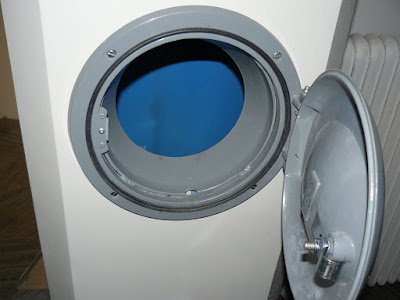This is by far, the coolest use for a vacuum cleaner I've ever seen! Tim 'Tool Time' Taylor would be green with envy. Here in Sweden, people don't take their trash to the curb anymore. That's very old school. Here... it gets sucked to the curb!
Meet the DISAB P210/9-1812.

This bad boy can produce up to -900 mbars of vacuum using 200 kW to service your trash disposal needs!
You simply put your trash in the handy indoor receptacle:


And... a few days later, a DISAB P210/9-1812 will literally suck it out of the building!

These guys are elusive. I spotted the first one two weeks ago, and even today, I could only get video of the hose retraction. Hopefully I'll get better footage soon!
Meet the DISAB P210/9-1812.
This bad boy can produce up to -900 mbars of vacuum using 200 kW to service your trash disposal needs!
You simply put your trash in the handy indoor receptacle:
And... a few days later, a DISAB P210/9-1812 will literally suck it out of the building!
These guys are elusive. I spotted the first one two weeks ago, and even today, I could only get video of the hose retraction. Hopefully I'll get better footage soon!
Comments
Post a Comment
Please leave your comments on this topic: